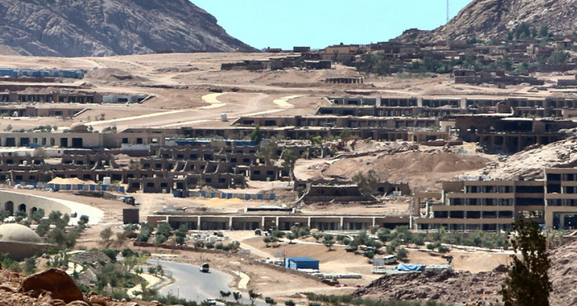As you navigate the winding, uneven road leading away from the Monastery of Saint Catherine, a strikingly surreal view emerges: just a stone’s throw from this sacred site, a massive tourist development is taking shape.
We spent hours exploring the surrounding area, ascending slopes and traversing incomplete construction zones, witnessing firsthand a project that starkly contrasts with the unspoiled, ascetic beauty of Sinai. Towering before us were five-star hotels nearing completion, lavish villas overlooking the Monastery, a state-of-the-art conference center, and numerous bustling construction sites.
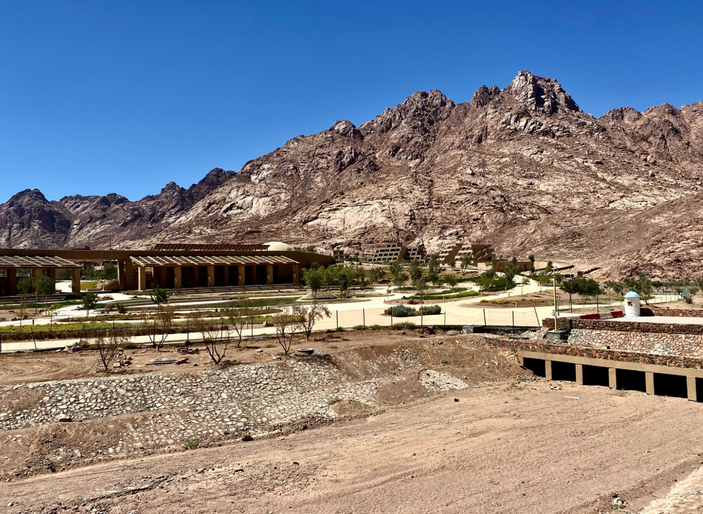
This initiative, dubbed “The Great Transformation,” aims to position Sinai as a premier destination for spiritual, cultural, and conference tourism. With a total investment of $320 million, the authorities project attracting up to 30 million tourists by 2028, a move they believe will yield significant economic benefits for Egypt.
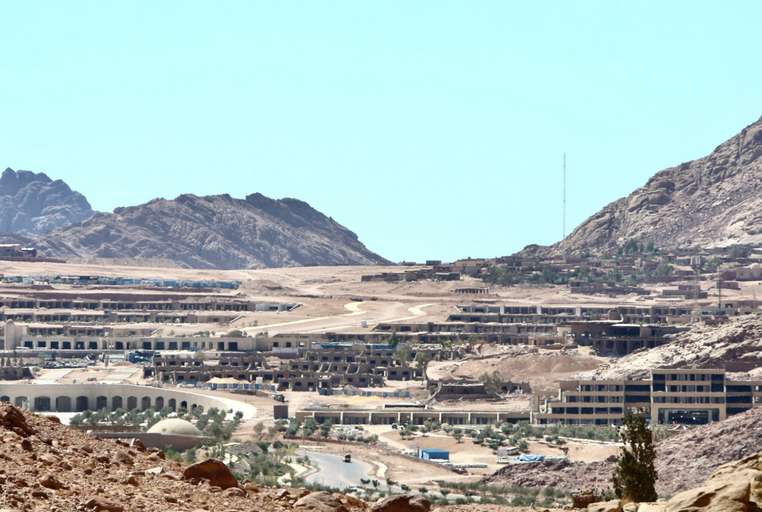
Officials assert that the developments comply fully with UNESCO guidelines, given that the site has been recognized as a World Cultural Heritage Site since 2002.
However, many—including major Egyptian media outlets—suspect that a recent court ruling regarding the confiscation of Monastery properties is closely linked to this construction surge.
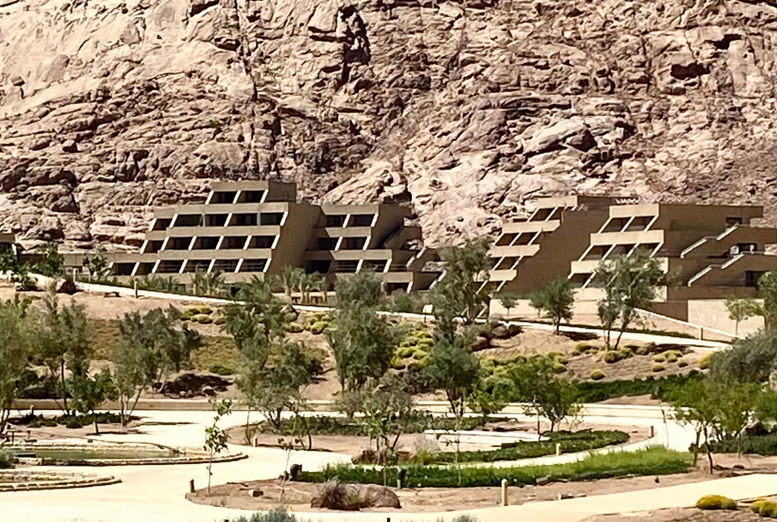
Critics highlight the timing of the ruling, coinciding with the launch of “The Great Transformation,” suggesting it may cater to specific economic interests.
It’s widely recognized that for influential figures in real estate and tourism, converting the Monastery from an active monastic site to a museum-like religious attraction could be highly advantageous. A monastery without monks, yet bustling with millions of daily tourists, would generate substantial revenue and global visibility.
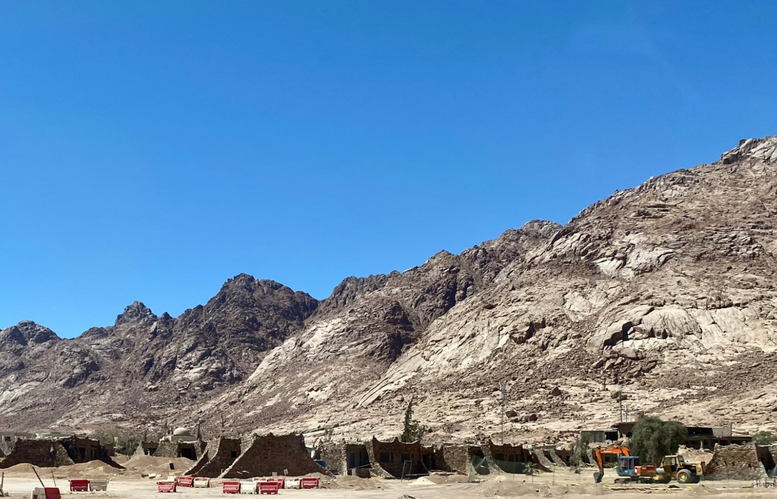
Currently, there’s no formal indication that the Monastery is part of these tourist development plans. Nevertheless, the closeness of the new infrastructure, the scale of the undertaking, and the timing of the court decision leave many uncertainties in their wake.
It could soon become evident whether this historic monastery—standing for 1,500 years at the junction of diverse religions and cultures—will remain intact or become yet another feature of a tourist itinerary crafted far from its sacred roots and prayers.
Ask me anything
Explore related questions














